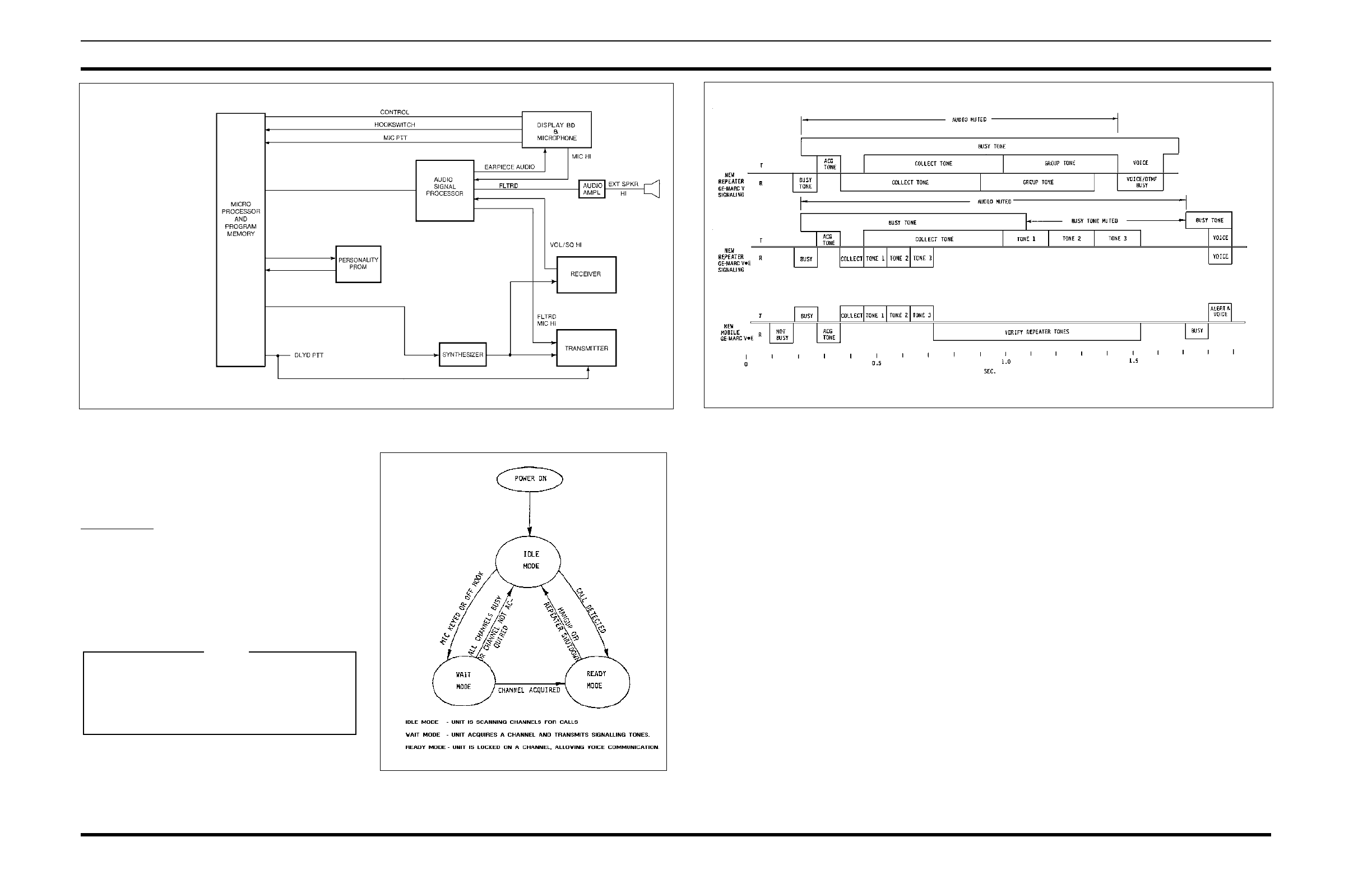
tone in order for the radio to enter the Ready mode. If no busy
tone is present or if the four-tone sequence isn’t valid, the
mobile will jump to the next channel in the call originate set
and check for busy tone as described above.
Ready Mode
When an incoming call has been detected or an idle chan-
nel has been acquired, the mobile enters the Ready mode. In
this mode, the audio and push-to-talk circuits are enabled, the
speaker is unmuted, and the operator is alerted by an alert tone.
The radio can then be used in the conventional push-to-talk
manner with the radio remaining on the channel until the
operator hangs up or the repeater drops the busy tone causing
the unit to revert to Idle mode.
GLOSSARY OF GE-MARC TERMS
Idle Mode
In the "standby" condition, the mobile is inactive but
prepared to call or be called. The trunked radios are IDLE
until they are turned off.
Wait Mode
In the "attempting origination" condition, the Wait
mode is entered from Idle mode (only) as the user presses
the PTT switch on the microphone, or comes "off-hook".
If successful, the unit becomes READY. Otherwise, the unit
is IDLE or IDLE/WAIT after all channels are tried.
Ready Mode
In the "operating" condition, Ready is entered from
Idle mode via Wait mode when calling or directly from Idle
when called. Ready mode ends (the radio reverts to Idle)
when the user disconnects or with the loss of received Busy
Tone from the repeater. This normally occurs when the
repeater shuts down after communication is completed.
Busy Tone
A "Voice-plus" tone of 3051.9 Hz is the standard busy
tone. The 2918 Hz is the alternate busy tone. The busy tone
modulates mobile and repeater transmitters at a low level of
1 kHz deviation continuously. This tone is filtered out of the
received audio and is used to hold the communication chan-
nel active. It also excludes other mobiles from using the
channel when a call is active.
Acquisition Tone
A 1962.9 Hz tone sent at full deviation for 50 millisec-
onds from the repeater is used as acknowledgment from the
repeater that a busy tone was sent and signals the mobile that
signalling tones can now be sent.
Collect Tone
A tone chosen from 34 standardized frequencies, rang-
ing from 508.6 Hz to 2792.4 Hz, is used as the first tone in
the group tone sequence. The collect tone is used to gather
all mobiles with the same collect tone for decoding a call.
The duration of the tone varies as a function of the number
of channels which are programmed into the mobile and/or
repeater.
If a call is initiated and a sequence of five beeps is sounded,
the user cannot access the radio system because the mobile
is out of receive range or is inoperative. Any subsequent
call will be ignored for 20 seconds.
NOTE
Figure 3 - Signal Timing Figure 1 - GE-MARC Block Diagram
Figure 2 - GE-MARC Operational Modes
LBI-38848D
5














